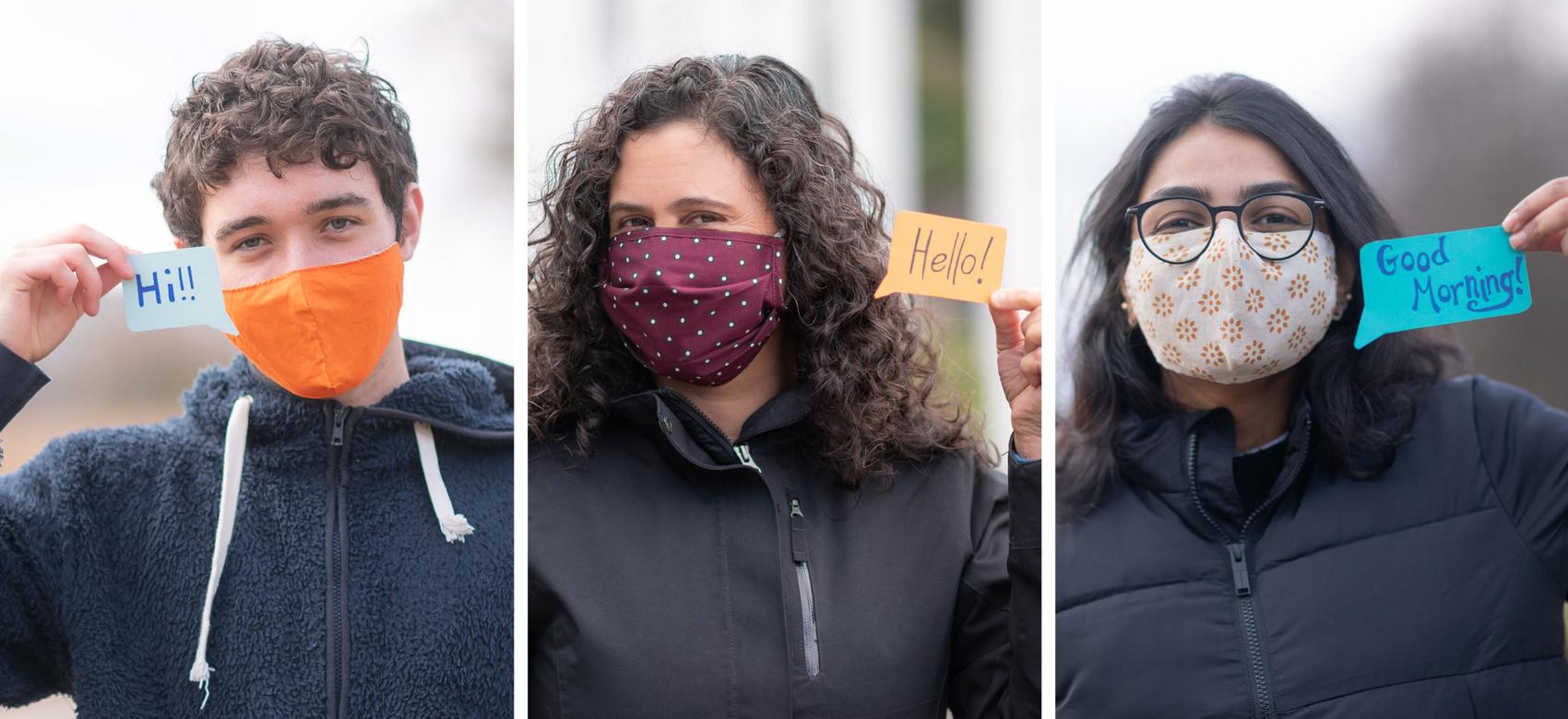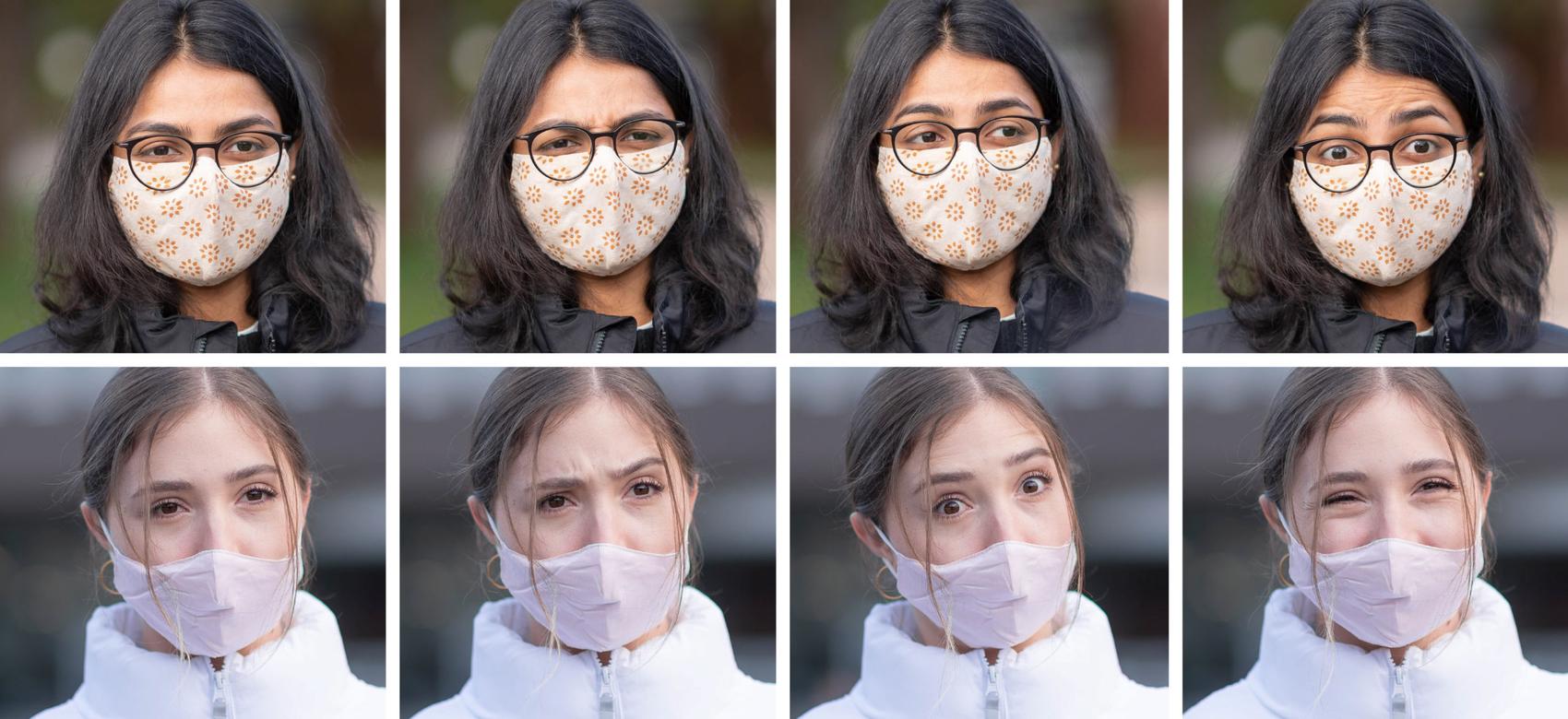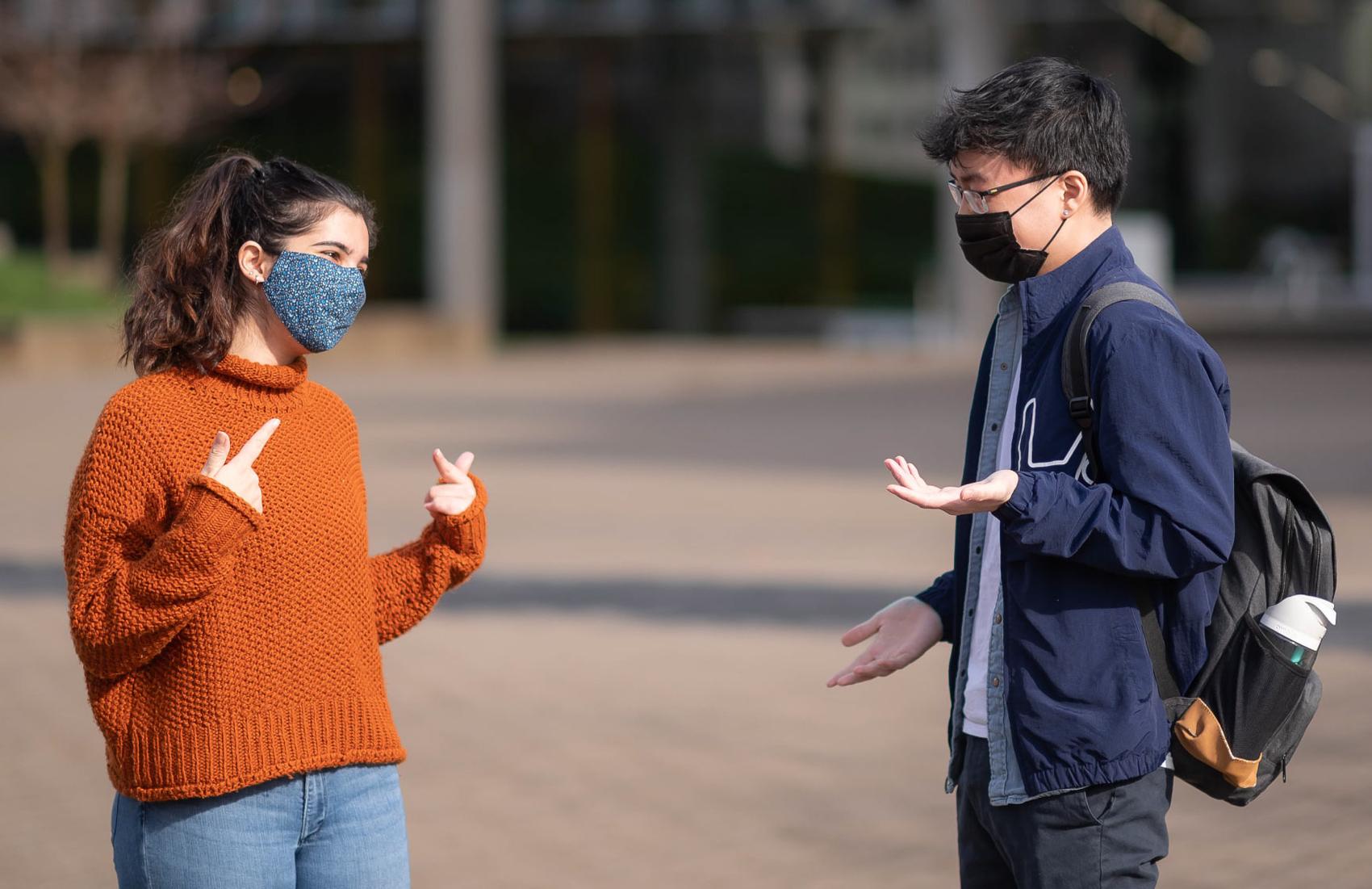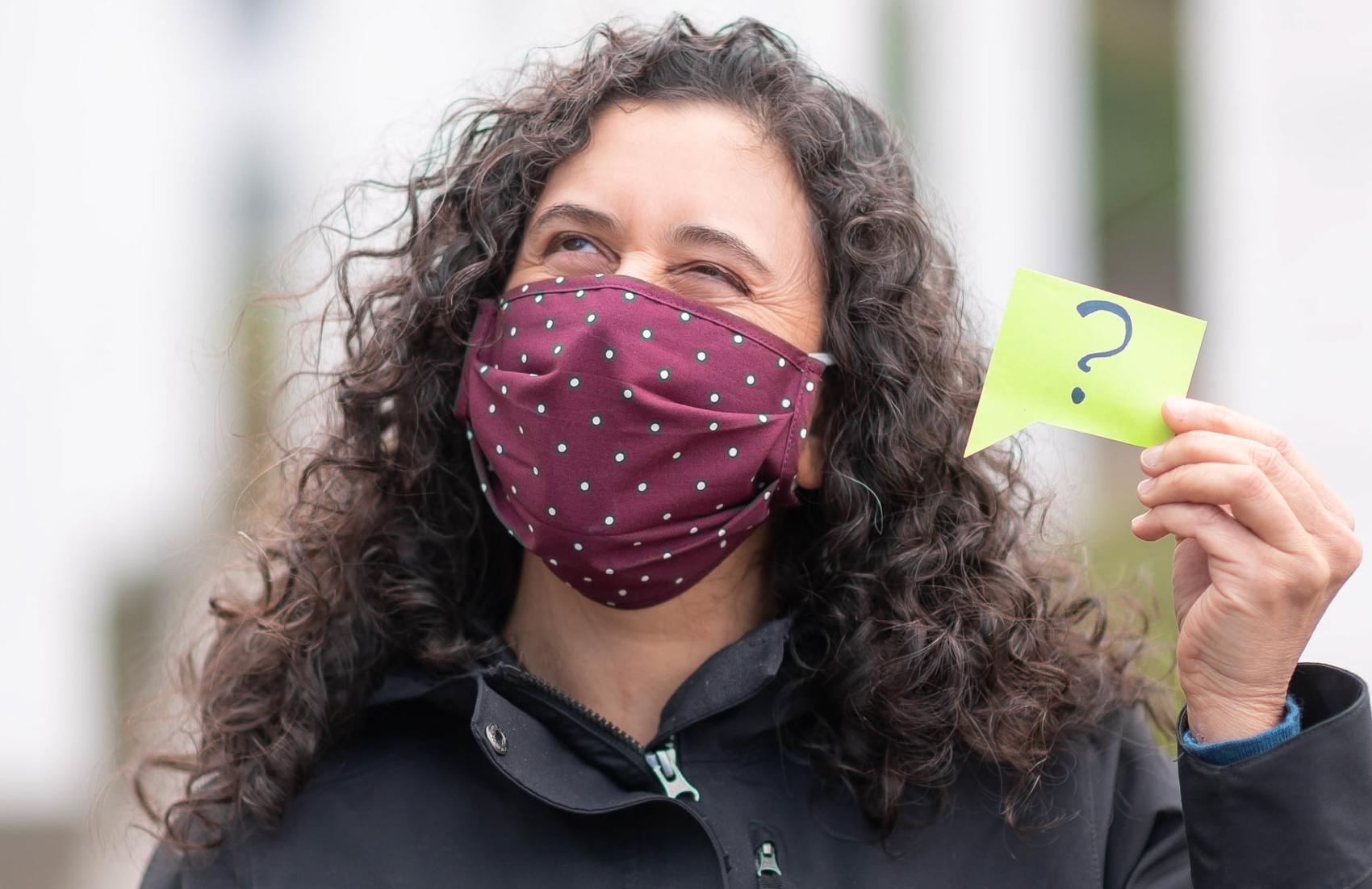8 tips to communicate better while wearing a face mask
By Carolyn Ali

Strategies that help people who are hard of hearing can help us all
Between face masks, plexiglass barriers and physical distancing, everyday conversations can stall quickly. What exactly did the cashier just say? How do I know if the pharmacist got the correct spelling of my last name?
Face masks are amplifying communication challenges for people with pre-existing hearing loss; over 19 per cent of Canadians aged 20 to 79 have measured hearing loss in at least one ear. But face masks are also creating new challenges for people who rarely had trouble following conversations in the past. “It almost feels like a shared problem now,” says Dr. Lorienne Jenstad, an audiologist with the UBC School of Audiology and Speech Sciences.
“People think that lip reading is something that people with hearing loss do. But we all do it.”
Dr. Lorienne Jenstad, UBC School of Audiology and Speech Sciences
It’s not just that we can’t hear each other: we can’t see each other’s faces. “The masks and plexiglass are interfering with the acoustics,” Dr. Jenstad explains. “But a lot of people don’t realize how much we use visual cues as well. People think that lip reading is something that people with hearing loss do. But we all do it. We all watch lip movement and facial expressions naturally, without thinking about it. It’s only when those are taken away that we start to realize how much we were using them.”
The good news? Strategies that help people communicate better with those who are deaf and hard of hearing can help everyone break through the face-mask communication barrier. Below, Dr. Jenstad and her UBC colleague, Dr. Brenda Poon, share tips from their research at the Wavefront Centre for Communication Accessibility.
Exaggerate your eyes

When your face is covered two-thirds with a mask, the only facial cues you have left are your eyes and your eyebrows. “Do a little extra exaggeration with the top third of your face,” says Dr. Jenstad. “If you make a big smile under your mask, you can still see the eyes crinkling up so that gives the person some cues.”
Clear face masks offer an alternative when visual cues are important, although they may muffle sound more than cloth masks.
Speak 10% louder and 10% slower
People tend to yell or speak very slowly to others who are obviously having trouble hearing them. That’s not helpful, says Dr. Jenstad, because it distorts the voice and sends mixed messages.
“If you’re trying to say, ‘Hey, I’m really happy to see you,’ but you yell it, it’s going to change the way your eyes look,” she explains. “If the person only hears tone, they’re going to hear something that sounds kind of angry.”
Instead of shouting, put just a bit more effort into raising your voice and speaking more clearly.
Use gestures

Point to objects. Use gestures to help convey emotion. For example, rather than smiling behind a mask at strangers on the street, Dr. Jenstad is training herself to acknowledge people with a head bob. An exaggerated gesture like a big, cheesy thumbs up can help get the message across. “Acknowledge our shared experience, and have some humour and forgiveness about the situation,” she adds.
Take turns
On Zoom, people have gotten used to staying silent while someone else is talking. We need to remember not to talk over one another in person as well.
“People do a lot of backchannelling,” adds Dr. Jenstad. “That’s confirming that you’re listening with a ‘yes,’ ‘uh huh,’ ‘right.’ Nod instead.”
Try to sit or stand in clear view the person you’re talking to, adds Dr. Poon. Be mindful of background noise, and move to a quieter space if possible.
Rephrase instead of repeat

Saying the same thing over and over can be futile. Instead, use different words that might be easier to understand. Or break down what you’re trying to say into smaller pieces. “Start with the topic,” Dr. Jenstad suggests. “For example, ‘I was asking about your dog. How old is it?’ or ‘What’s its name?’”
Check for understanding
Watch for signs that the message is not getting across. “If they have a furrowed brow look, that could mean they’re not getting it,” says Dr. Jenstad. Also watch for unexpected responses that indicates the person isn’t following; for example, if you say, “Hi, how are you?” and they respond “Yes.”
Rather than asking “Do you understand?”, make it your job to understand them. “Say, ‘If I heard you correctly,’ and then summarize what you thought they said,” suggests Dr. Poon. “Ask ‘Do you need me to say that again?’ or ‘Do you have any questions about what I just said?’”
Get creative with signs


If you work at a business dealing with customers, consider making a sign addressing recurring questions.
“At the grocery store cashier, for example, they likely have a certain number of questions they’re going to ask,” explains Dr. Jenstad. “’Do you need bags? Do you have a loyalty card?’ They could make a sign that has those questions, and the cashier could then point to the relevant one. Then customers can just nod yes or no.”
Use text
Most smartphones have a notetaking app; you can dictate a message, convert it to text and show somebody else your phone to clarify your thoughts. Dr. Poon recommends this strategy to people who are hard of hearing, with the caveat that you might have to train the app to recognize your voice through a mask. Communicating through text can be especially useful in stressful, high-stakes situations such as medical consultations. “You could also go old school with pen and paper,” adds Dr. Jenstad. “If it’s a really key message, write it down so you know that it was understood.”
Carolyn Ali is a writer for UBC’s Brand and Marketing. This article was published February 26, 2021.
Feel free to republish the text of this article, but please follow our guidelines for attribution and seek any necessary permissions before doing so. Please note that images are not included in this blanket licence.


